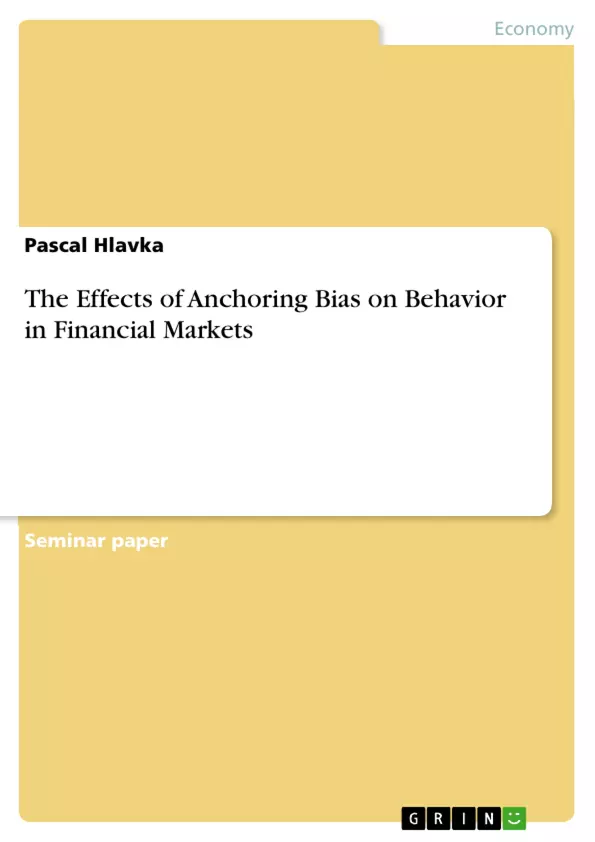The phenomenon of Anchoring bias refers to the influence of arbitrary numbers in decision-making under uncertainty. Humans are affected by anchors on a daily basis, especially when confronted with quantitative tasks. However, basic anchoring effects appear even when individuals are not expected to compare the value to a certain estimation task. Many researchers tried to figure out the reasons for the anchoring bias. Kahnemann et alii conducted three studies and concluded anchoring bias as the disability of adjustment processes. In an experimental setting the anchoring effects are examined by first showing the participant an arbitrary number, then comparing it to a certain targeted value and finally giving an own estimation. The anchoring bias appears in the last step as the estimation is inevitably biased toward the initial anchor. An alternative explanation is found in the studies conducted by Mussweiler et al. They suggest that the anchoring effect is rather a combination of insufficient adjustment and selective accessibility.
This paper aims to combine both explanations and test four hypotheses in an experimental setting related to financial markets. The first assumption to be tested is whether a comparative task yields to higher anchoring bias when an anchor is provided or self-generated. The second hypothesis to be proved is whether the anchoring bias can mitigate by giving explanations on the comparative task answers. Thirdly, the paper assumes a positive correlation between motivation and cognitive capacity influence the estimates significantly. Finally, this paper extents the research by asking whether risk-aversion is correlated to the anchoring bias.
Table of Contents
- Introduction
- Background and Related Literature
- Anchoring bias in Financial Markets
- Hypotheses Development
- Data and Research Design
- Experimental setup
- Data analysis and theoretical results
- Experimental setup
- General Discussion and model limitations
- Incentivizing
- Choice of non-professionals
- Conversational inferences
- Research Design and Forecast Errors
- Conclusion and Outlook
Objectives and Key Themes
This paper aims to investigate the influence of anchoring bias on behavior in financial markets by conducting an experiment. It combines two existing explanations for anchoring bias: insufficient adjustment and selective accessibility. The paper explores the impact of various factors, including the origin of the anchor, provision of explanations, individual motivation, and risk aversion, on anchoring bias.
- The influence of anchoring bias on decision-making in financial markets.
- The role of self-generated vs. provided anchors in anchoring bias.
- The potential mitigation of anchoring bias through explanations.
- The correlation between motivation and anchoring bias.
- The relationship between risk aversion and anchoring bias.
Chapter Summaries
- Introduction: Introduces the concept of anchoring bias, its relevance in decision-making under uncertainty, and outlines the research questions and structure of the paper.
- Background and Related Literature: Provides a comprehensive overview of anchoring bias research, starting with the seminal work of Tversky and Kahnemann (1974). It explores the existing literature on anchoring effects in various fields, including negotiation, pay-what-you-want settings, and studies that address potential explanations for the bias.
Keywords
The primary focus of this paper is on anchoring bias in financial markets. Key concepts include behavioral economics, heuristics, decision-making under uncertainty, insufficient adjustment, selective accessibility, experimental design, and financial market behavior.
- Quote paper
- Pascal Hlavka (Author), 2021, The Effects of Anchoring Bias on Behavior in Financial Markets, Munich, GRIN Verlag, https://www.grin.com/document/1172421



